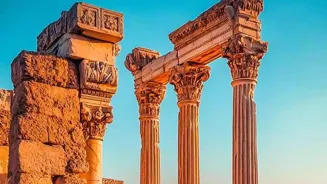Unveiling 10 Historical Landmarks: Stories That Shaped the World. A journey through time awaits!
India, a land brimming with history and culture, holds a deep respect for landmarks. These places are not
just tourist spots; they are silent storytellers, whispering tales of empires risen and fallen, societies transformed, and ideas that changed the course of humanity.
They are a vital link to our past, offering invaluable lessons and insights into the present. Let's take a journey across the globe, exploring ten such sites that have profoundly shaped our world, and what they represent.
The Great Wall of China: a symbol of endurance, defense, and cultural identity
The Great Wall of China, snaking across thousands of kilometers, isn't just a wall; it's a testament to human endurance and strategic brilliance. Constructed over centuries, starting as early as the 7th century BC, it served as a formidable defense against invaders.
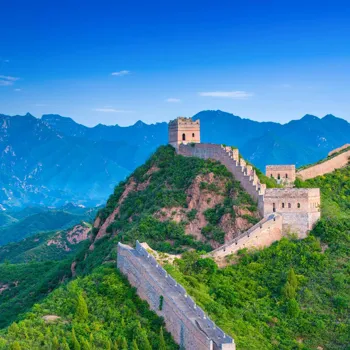
Its imposing structure showcases ancient engineering and China's determination to safeguard its civilization. Walking along its weathered stones evokes a sense of awe and respect for the immense effort involved in its creation.
It reminds one of the dynasties that came and went, each leaving their stamp on this monumental project. The wall symbolises not just physical protection, but also the preservation of cultural identity.
It embodies the spirit of resilience and the power of collective effort in achieving a grand objective. Standing on this marvel, one can almost feel the echoes of soldiers guarding the frontier and the determination of emperors securing their realm.
Machu Picchu: Ancient Inca marvel hidden in the Andes
Machu Picchu, nestled high in the Andes Mountains of Peru, is a breathtaking architectural achievement of the Inca civilization. Built in the 15th century, this "Lost City of the Incas" remained hidden from the outside world until its rediscovery in 1911.
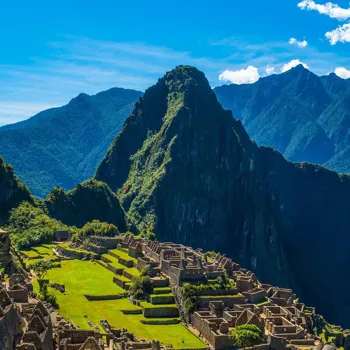
Its intricate stonework, perfectly fitted without mortar, is a marvel of engineering. The site offers a glimpse into Inca life, their advanced understanding of agriculture, and their profound connection to nature.
One can only imagine the dedication and skill required to construct such a city in such a remote and challenging environment. The precision and artistry are remarkable. Machu Picchu is a symbol of human ingenuity and adaptability, standing as a testament to the ingenuity of an ancient culture.
It reminds us of the interconnectedness of humanity and the planet.
The Colosseum in Rome symbolizes the Roman Empire's grandeur and entertainment hub
The Colosseum in Rome, Italy, stands as a lasting symbol of the Roman Empire's power and grandeur. This amphitheater, built nearly 2000 years ago, hosted gladiatorial contests, public spectacles, and even mock sea battles.
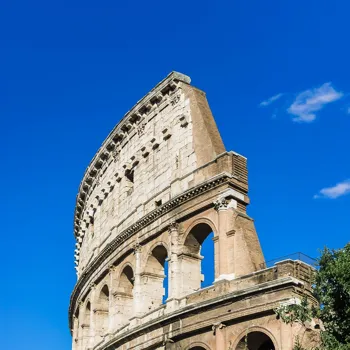
Able to hold tens of thousands of spectators, it was a center of entertainment. It showcased Roman engineering prowess with its complex system of arches and vaults. The Colosseum is a reminder of Roman law, social values, and the sophisticated infrastructure that sustained a vast empire.
Standing withing it, one can almost hear the cheers of the crowd. It prompts reflection on the rise and fall of empires and the enduring impact of Roman civilization on law, language, and culture. It truly highlights the power of the Roman Empire at it's peak.
The Taj Mahal: Monument of Love and Beauty
The Taj Mahal in Agra, India, is a monument of love and architectural perfection. Commissioned by Mughal Emperor Shah Jahan in memory of his beloved wife, Mumtaz Mahal, this ivory-white marble mausoleum is an epitome of beauty and craftsmanship.
Its intricate carvings, symmetrical design, and serene gardens create a mesmerizing visual experience. The Taj Mahal exemplifies Mughal artistry, combining Persian, Islamic, and Indian architectural styles. It represents eternal love. This building is a testament to undying romance.
It also showcases cultural fusion and architectural genius. It's one of the wonders of the new world and it's a must see if one visits it.
Angkor Wat: Khmer temple complex reflects grandeur, artistry, and cultural transformation in Cambodia
Angkor Wat in Cambodia is a magnificent temple complex that reflects the grandeur of the Khmer empire. Built in the 12th century, it was originally dedicated to the Hindu god Vishnu before transforming into a Buddhist temple.
Its intricate carvings, towering structures, and vast moats showcase the Khmer's mastery of architecture and engineering. Angkor Wat offers insights into the religious beliefs, political power and artistic achievements of the Khmer civilization.
It represents the complexities of faith, cultural transformation, and human ambition. It's a true display of the architecture and religious values of the area. One can spend days simply walking around the property and never truly see it all.
The Pyramids of Giza symbolize ancient Egypt's prowess and legacy
The Pyramids of Giza in Egypt are awe-inspiring monuments that stand as testaments to ancient Egyptian civilization. Constructed as tombs for pharaohs, these colossal structures showcase the Egyptians' advanced knowledge of mathematics, astronomy, and engineering.
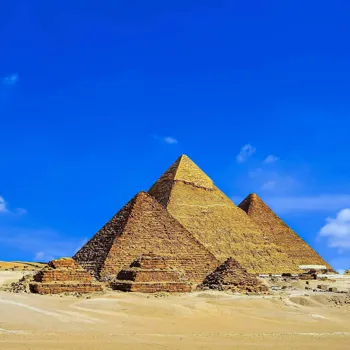
The Great Pyramid of Giza, the largest of the three, is a marvel of precision. It has stood for thousands of years, reminding us of mortality and the pursuit of immortality. They speak of the power, ingenuity and religious beliefs of a society that has profoundly shaped human history.
The pyramids prompt one to realize the amount of dedication and effort that was placed in order to create such a structure. They're unlike anything else that has been built.
AI Generated Content. Glance/InMobi shall have no liability for the content